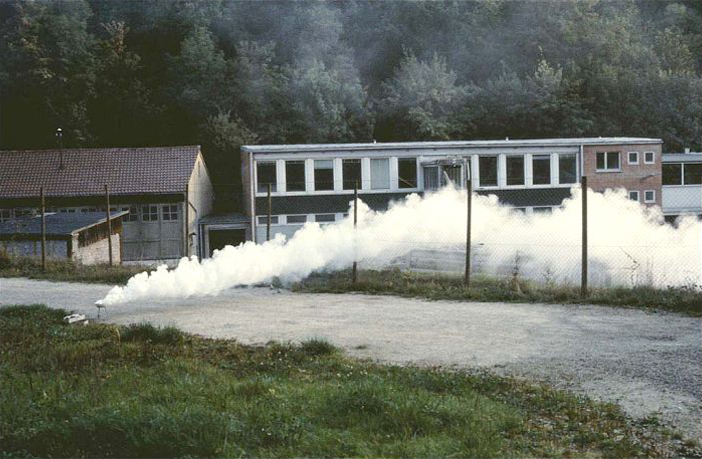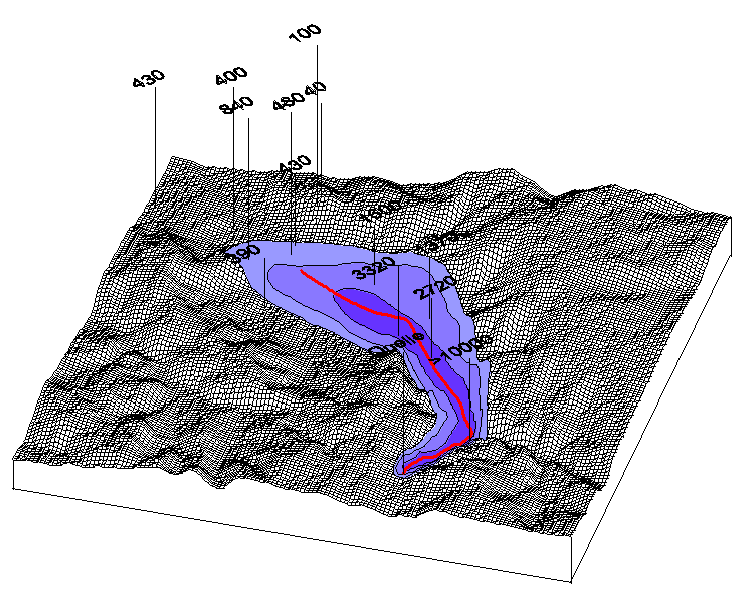|
|
| METHODS OF INFORMATION ACQUISITION FOR PLANNING
(MEASUREMENTS, WIND TUNNELS, NUMERICAL MODELLING) |  |
| | | |
 4.1.3 Tracer Experiments 4.1.3 Tracer Experiments |
In order to measure air movements and air transport routes, it is possible to enrich the air with a tracer and follow and measure its motion. The simplest method uses smoke canisters. The smoke, typically colored, mixes with the flowing air and is transported so that e.g. it can be photographically documented and evaluated. Smoke canisters are usually employed to mark cold air flows, since these move relatively slowly and exhibit only minor vertical mixing. Figure 4/5 and Figure 4/5a illustrates the visualisation of a cold-air flow through a smoke bomb.
A more elaborate method includes the use of tracer gases, like sulphur hexafluoride (SF6). The tracer is here released at a selected point and its concentration is then determined at many other points along the presumed flow route (Figure 4/6) by taking air samples at regular time intervals. The concentration of the samples is later determined in a laboratory. Tracer gases should be anthropogenic, chemically stable (inert), non-poisonous and identifiable with standard methods.
|
|
| | | |
 |
| Fig. 4/5: Cold air flow, marked by artificial smoke, Source: KUTTLER u. DÜTEMEYER, 2003 | | |
 |
| Fig. 4/5a: Cold air flow, marked by artificial smoke | | |
 |
| Fig. 4/6: The distribution of the tracer gas SF6 as an average over the total duration of measurement (ppb) during the night of 9-10 August 1996 for determining the cold air flow in Stuttgart; red line: cold air trajectory calculated with KALM (s. a. Chapter 4.3.2) (BAUMBACH et al., 1999) |
|
